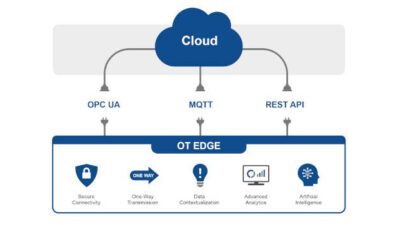The first step in migrating to a high-performance human-machine interface (HP-HMI) should always be storyboarding, which offers a visual representation of the layout and hierarchy of the new high-performance graphics (HPGs). This helps operators become an active part of the migration planning process.

Human-machine interface (HMI) migration can be a painful process—especially for operators who have resisted the move from 1st or 2nd generation CRT-based graphics to the new world of gray-scale, ASM-compliant displays with little color and greater concentration of process and instrumentation. One of the prime benefits of migrating to high-performance HMI (HP-HMI) is a reduction in the total number of graphics by as much as 25 to 50%.
One way to get such a migration project started that has proven successful in introducing operators to the new world of HP-HMI and in gaining their acceptance is to employ a facilitation process known as "storyboarding." This process is a way of developing a visual representation of the layout and hierarchy of the new HP-HMI that will cover the operator’s entire span of control.
Those familiar with the concept of HP-HMI understand and appreciate the graphics hierarchy:
- Level 1 displays – Large overview graphics mounted over the console for display of key performance indicators (KPIs), key variable trends, etc.
- Level 2 displays – Process flow diagram (PFD)-like graphics that display major sections of the process with all key operating variables and controllers. If properly designed, these will be used 90% of the time for normal operation.
- Level 3 displays – Detail graphics, more like a piping and instrumentation diagram (P&ID), to drill down to when an abnormal situation needs attention, diagnosis, and action.
- Level 4 displays – Task-oriented graphics—used for special, infrequent activities, like starting up or shutting down a major piece of equipment.
- Pop-ups – Focused graphics displaying useful details that would normally clutter a level 2 or 3 display—such as a temperature profile in a reactor.
Preparation for the storyboarding session includes a review of the process, ideally via a good set of PFDs, along with a complete set of screen shots of all current graphics in use on the console that is being migrated. Attendees should include several senior operators, along with representatives from process control and process engineering.
The first and most difficult step in the storyboarding process is to identify the level 2 graphics. These are critical—the success of the overall layout and hierarchy depends on getting these right. The objective is to end up with the minimum number of level 2 graphics required to provide the operator with all the proper handles to operate the entire unit under normal conditions with those graphics alone.
A typical major process unit such as a reformer in a refinery will have 6 to 10 level 2 graphics—most of these to cover the process itself and one or two for special use, such as critical alarms, utilities, catalyst regeneration, etc. After the level 2 graphics have been laid out, the storyboard is then filled in with the remaining hierarchy of graphics organized under the level 2s.
A typical storyboard for a smaller process unit is shown in the accompanying graphic. In this case, the process itself has been condensed to three level 2s with two more for the flare and utilities—a very compact and elegant layout. Note that there are several major pieces of mechanical equipment requiring many level 4 graphics for startup and shutdown. However, these will be called up rarely, since these operations occur infrequently.
The storyboarding process introduces operators to the concept of HP-HMI and, at the same time, engages them in the migration process itself. This allows them to take ownership of the design of the new HMI for their area of responsibility. Exposure to examples of the various graphics types during the session introduces them to the many enhanced features of HP-HMI. Change is often uncomfortable, but it is inevitable. Beginning the HMI migration process with storyboarding is a great way to put operators in their comfort zone and to guarantee project success.
This post was written by Jim Ford. Jim is a senior consultant at Maverick Technologies, a leading automation solutions provider offering industrial automation, strategic manufacturing, and enterprise integration services for the process industries. Maverick delivers expertise and consulting in a wide variety of areas including industrial automation controls, distributed control systems, manufacturing execution systems, operational strategy, business process optimization, and more.
Maverick Technologies is a CSIA member as of 7/19/2016.



